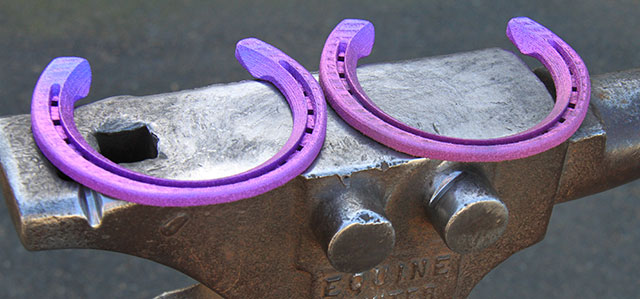Australian scientists have designed and 3D printed a set of custom titanium shoes for one Melbourne racehorse to improve its performance, according to a recent research statement from the Commonwealth Scientific and Industrial Research Organisation (CSIRO), which is Australia’s national science agency.
A horseshoe is a fabricated product, normally made of metal, sometimes made with modern synthetic materials, but always designed to protect a horse’s hooves from wear and tear. Shoes are attached to the surface of the hooves, usually nailed through the insensitive hoof wall that is anatomically akin to the human toenail. However, there are cases where horse shoes are sometimes glued. Traditional aluminium horseshoes can weigh up to one kilogram, but, in this case, the horse’s trainer, John Moloney, was looking for the ultimate race shoe — one that was as light weight as possible.
“Any extra weight in the horseshoe will slow the horse down. These titanium shoes could take up to half of the weight off a traditional aluminium shoe, which means a horse could travel at new speeds. Naturally, we’re very excited at the prospect of improved performance from these shoes,” Moloney said.
The precision scanning process of the hooves takes just a few minutes and then each of the four custom shoes can be printed the same day.
CSIRO has recently established an Arcam additive manufacturing facility, the first in the southern hemisphere, to provide industry with access to advanced electron beam melting (EBM) technologies for 3D printing metals. CSIRO has developed an improved machining process for titanium metal and its alloys by using a localised high-energy heat source, such as a laser beam, in conjunction with cutting tools.
CSIRO’s titanium expert, John Barnes, said that 3D printing a race horseshoe with this material is a first for scientists and demonstrates the expanding range of applications the technology can be used for.
“There are so many ways we can use 3D titanium printing. At CSIRO we are helping companies create new applications like biomedical implants and even things like automotive and aerospace parts. The possibilities really are endless with this technology,” he said.



